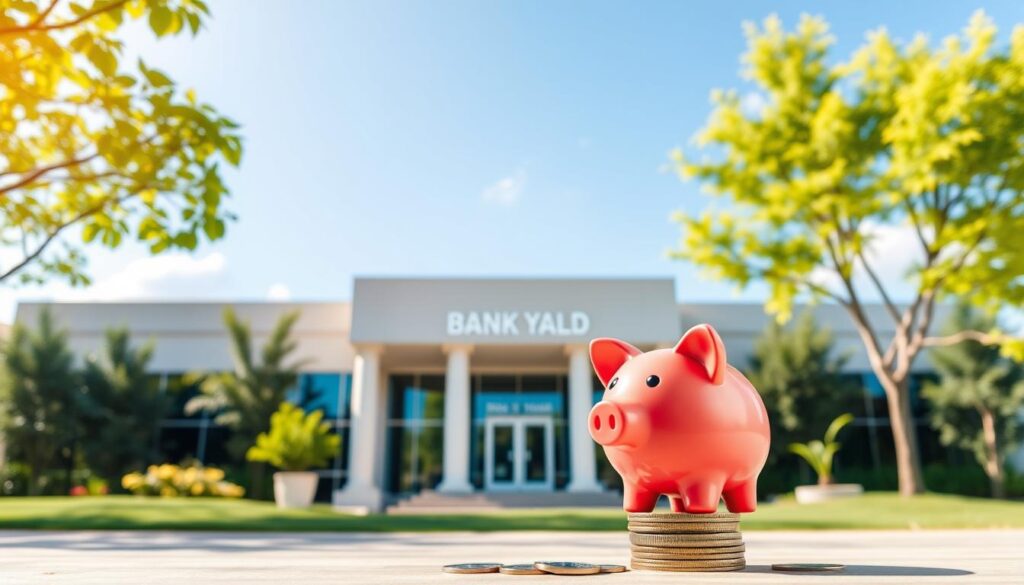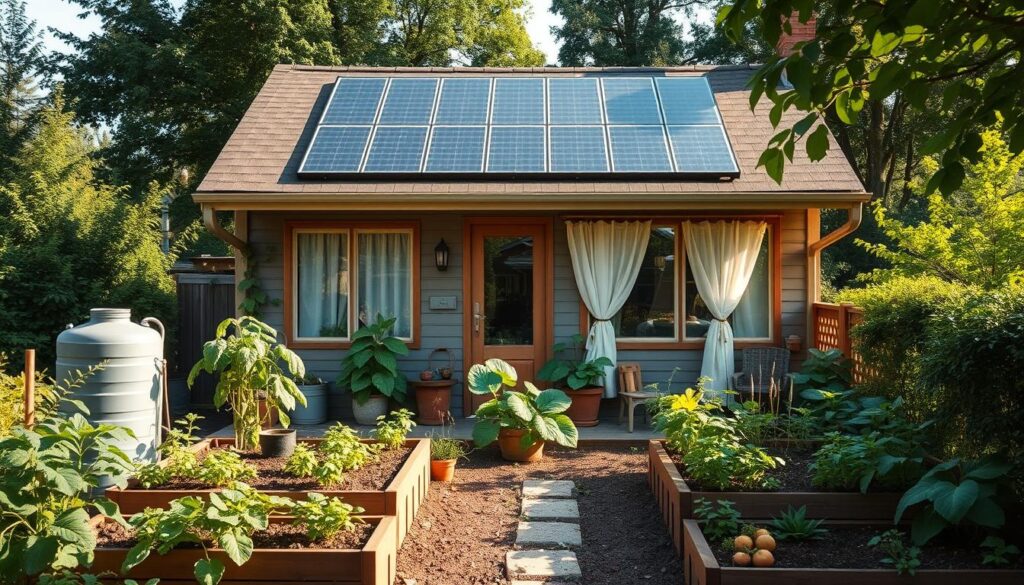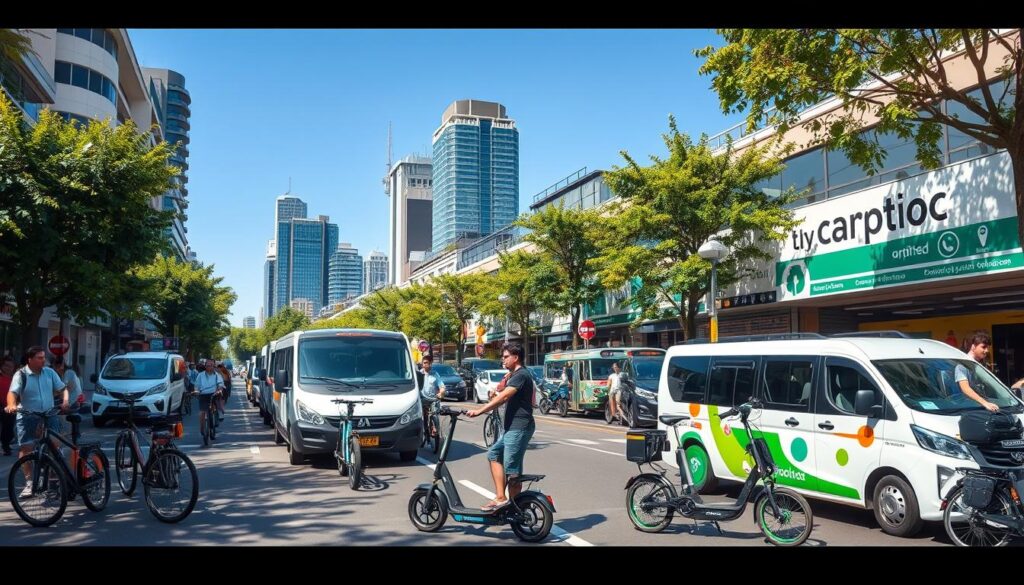Looking at my bank account, I saw a balance that couldn’t cover next month’s rent. It was scary. But even on a tight budget, you can build financial security. Let’s explore how to save money fast on a low income.
Low-income families with $500 in savings often do better than moderate-income families without. This shows how important a financial budget is, no matter your income. Smart money-saving methods can help you start building a safety net today.
Try to save 15% to 20% of your income gradually. Start small with $100 in a monthly SIP or recurring deposit. These small steps can lead to big savings over time.
Key Takeaways
- Start with a small emergency fund goal of $500
- Gradually increase savings to 15-20% of income
- Consider low-cost investment options like SIPs
- Look into affordable term insurance plans
- Explore refinancing options to lower housing costs
- Create a food budget to control spending
- Cancel unnecessary subscriptions and memberships
Creating a Smart Budget Strategy for Financial Success
A smart budget strategy is crucial for financial success. Only 54% of U.S. adults have enough emergency savings for three months. Let’s explore effective budgeting tips and money-saving strategies to improve your financial planning.
Understanding the 70-20-10 Budget Rule
The 70-20-10 budget rule is a simple yet powerful money-saving strategy. It suggests allocating 70% of income to essentials, 20% to savings, and 10% to debt or donations.
This approach helps balance your financial priorities. It ensures you’re saving for the future while managing current expenses.
Categorizing Essential vs Non-Essential Expenses
To create an effective budget, categorize your expenses as essential or non-essential. Essential expenses include housing, utilities, food, and transportation. Non-essential expenses are things like entertainment and dining out.
By prioritizing essentials, you can identify areas to cut back. This helps you save money faster and more efficiently.
Using Digital Tools for Budget Tracking
Digital tools can greatly enhance your money management skills. Apps and software provide automatic budget dashboards and expense forecasting. These features make it easier to track spending and stick to your financial plan.
EveryDollar is a popular tool for budgeting and expense tracking. It can help you stay on top of your finances effectively.
“Budgeting is not just about restricting spending, it’s about making your money work for you.”
Remember, effective budgeting takes time. It usually takes 3 to 4 months to fully grasp budgeting and make adjustments. Stay committed to your financial planning.
With persistence, you’ll see improvements in your money-saving strategies over time. Keep working at it, and you’ll achieve your financial goals.
Setting Up a High-Yield Savings Account

Opening a high-yield savings account is a smart move. It keeps your savings separate from spending money. These accounts offer better interest rates than traditional ones.
Online banks often provide savings accounts with high APYs. These can be over 4.5%, much higher than traditional banks’ rates. A $5,000 deposit in a 4% APY account can earn $200 in a year.
Automating transfers to your high-yield account makes budgeting easier. This helps you save part of your income consistently. It’s an excellent way to build your financial future.
Remember, 27% of U.S. adults don’t have emergency savings, while 59% aren’t comfortable with their current savings amount. Don’t be part of these statistics!
High-yield savings accounts are great for:
- Building emergency funds
- Saving for long-term financial goals
- Earning more interest on your money
- Keeping your savings separate from spending money
A high-yield savings account is key to financial stability. It’s a simple way to make your money work harder. Even on a tight budget, this account can boost your savings.
Tracking and Eliminating Unnecessary Expenses
Understanding where your money goes is key to budgeting. Tracking expenses helps you save money effectively. Let’s explore some smart ways to cut costs.
Identifying Hidden Money Drains
Hidden expenses can quickly derail your budget. Check your bank statements for forgotten recurring charges. Small purchases, like daily coffee, add up over time.
Preparing meals and coffee at home could slash your food expenses significantly. This simple change can lead to substantial savings.
![]()
Cancelling Unused Subscriptions
In January 2024, 99% of U.S. households had at least one streaming service. Review your subscriptions and cancel those you rarely use. This can result in significant savings over time.
Reducing Entertainment Costs
Entertainment doesn’t have to be expensive. Here are some smart spending habits:
- Visit local libraries for free books, movies, and events
- Explore free outdoor activities like hiking or picnics
- Host game nights with friends instead of going out
- Look for free community events in your area
These cost-cutting ideas will help you live on a budget. Small changes can lead to big savings over time. Start implementing these habits today for a more secure financial future.
15 Simple Ways to Save Money Fast on a Low Income
Saving money on a tight budget is tough, but it’s doable. Try these frugal tips to stretch your dollars further.

Start by automating your savings. Open a high-yield account with a credit union like Fibre Federal. They offer no-fee accounts and an 18-month Money Builder Certificate starting at just $25.
Cut back on eating out. Fast food prices are up 12.9%, so cooking at home saves money. Americans spend $3,459 yearly on dining out. Put some of that cash into savings instead.
- Use coupons and shop generic brands
- Cancel unused subscriptions
- Reduce utility costs with energy-saving methods
- Explore free community events for entertainment
Think about debt consolidation to lower interest payments. Fibre Federal offers flexible terms and a unique Skip a Pay feature. You can skip one payment yearly for a $25 fee, helping in tight months.
“Small, consistent actions build long-term financial stability.”
Look into refinancing your car loan for better rates. Credit unions often have competitive interest rates. Also, consider a Money Market account for higher interest on savings.
Every dollar saved matters. These tips can help build a more secure future, even on a tight budget.
Smart Shopping Strategies for Essential Items
Smart shopping for essentials can help you manage your budget effectively. It’s a key strategy for those on a tight budget. Let’s explore ways to stretch your dollars further.
Coupons and Cashback: Your Saving Allies
Coupons and cashback apps are powerful money-saving tools. They can significantly reduce your grocery bills. With families spending $220.80 weekly on groceries, these savings add up fast.

Generic vs Name Brands: The Price-Quality Balance
Choosing generic brands over name brands can lead to big savings. A home-cooked meal costs about $4, while a restaurant meal costs $13. Generic ingredients can lower this cost even more without sacrificing quality.
Seasonal Sales: Timing Your Purchases
Taking advantage of seasonal sales is a smart money-saving move. Plan big purchases around these events to maximize savings. Americans save only 10% of their income, so every penny saved matters.
These shopping strategies can help you manage low income better. By making smart choices, you can improve your financial situation. Leverage available resources to make progress on your financial journey.
Reducing Monthly Housing and Utility Costs

Living on a modest income can be challenging. Yet, there are ways to cut costs. Housing and utilities often consume a large portion of your budget.
Downsizing is an effective money-saving strategy. Moving to a smaller place can lower your rent or mortgage. Getting a roommate could halve your housing costs.
Utility bills offer opportunities for savings too. A smart thermostat can regulate heating and cooling, potentially saving hundreds yearly.
- Use energy-efficient LED bulbs
- Unplug appliances when not in use
- Take shorter, cooler showers
- Seal drafts around windows and doors
Cutting one minute off shower time saves 2-3 gallons of water. This adds up over a year! Government programs can help too.
The Affordable Connectivity Program might benefit over 40% of U.S. households. It can significantly reduce internet costs.
“Small changes in daily habits can lead to big savings on utility bills.”
These strategies can free up more income for savings or necessities. Every dollar saved improves your financial health. Even small changes can make a big difference over time.
Implementing Effective Meal Planning and Food Savings
Smart meal planning and food savings are crucial for thrifty living. Cutting costs in the kitchen can greatly impact your budget. Let’s explore ways to stretch your funds through savvy shopping and meal prep.

Grocery Shopping on a Budget
Smart shopping leads to big savings. Generic brands can cut costs by up to 50% while keeping quality. Bulk purchases of grains, legumes, and dried fruits offer great value.
Frozen fruits and veggies are budget-friendly alternatives to fresh produce. They reduce waste and save money.
Meal Prep Strategies
Effective meal planning is key to thrifty living. Use cheaper cuts of meat and protein alternatives like beans, eggs, and canned fish. These choices lower your grocery bill without sacrificing nutrition.
Planning meals in advance helps avoid impulse buys. It also reduces food waste.
- Replace expensive meats with budget-friendly proteins
- Cook in batches to save time and energy
- Use a meal planning service for structured grocery lists
Reducing Food Waste
Minimizing waste is crucial when funds are tight. Plan meals to use ingredients fully, and store leftovers properly. Get creative with leftovers to stretch your food budget further.
Remember, throwing away food is like tossing money in the trash.
“Meal planning and smart shopping can lead to savings of over $2,000 annually on food expenses.”
These strategies can help you cut food costs. You’ll maintain a nutritious diet, even on a minimal income.
Transportation Cost Reduction Techniques

Smart transportation choices can lead to big savings for low-income households. Let’s explore money-saving hacks for your daily commute and travel needs. These strategies can help you cut costs and live more thriftily.
Walking or cycling for short trips saves money and boosts health. Public transit is often cheaper than owning a car. Many cities offer discounted passes for low-income residents.
If you must own a car, regular maintenance can prevent costly repairs. Shop around for affordable insurance. Look into low-interest auto loans. Start a carpool with coworkers to split gas costs.
Car-sharing services can be more economical than full-time car ownership. These allow you to rent a car by the hour or day. You’ll save on insurance, parking, and maintenance costs.
“I switched to public transit and saved over $200 a month on gas and parking. It’s been a game-changer for my budget!”
Small changes in your transportation habits can lead to big savings over time. By using these money-saving hacks, you’ll improve your financial situation. Your wallet will thank you for making smart choices.
Debt Management and Interest Reduction Strategies
Smart debt management is key for low-income budgeting. It offers quick ways to save cash and cut costs. Tackling debt helps you find effective financial solutions.
Prioritizing High-Interest Debt
List your debts and their interest rates. Pay off high-interest debts like credit cards first. This Avalanche method can save you money over time.
For instance, a $5,000 credit card debt at 20% interest adds up fast. Paying it off quickly could save you hundreds in charges.
Debt Consolidation Options
Consolidating debts can simplify payments and lower interest rates. Look into balance transfer cards or personal loans. Some cards offer 0% interest promotions.
These promotions give you time to pay down debt without extra interest. This can be a powerful tool for managing your finances.

Building an Emergency Fund
An emergency fund is crucial for financial stability. Try to save 3-6 months of living expenses. Start small by setting aside $20-$50 per paycheck.
This fund can prevent new debt when unexpected costs pop up. It’s a safety net for your financial future.
“The best way to predict the future is to create it.” – Peter Drucker
Consistency is vital in managing debt and savings. Set aside money for debt and savings each month. With time and discipline, you’ll achieve financial freedom.
DIY Solutions for Home and Personal Care

DIY solutions are crucial for a low-cost lifestyle. Learning basic skills saves money and boosts self-esteem. This approach can greatly benefit your finances.
Begin with easy home fixes. Online guides can help with leaky faucets and clogged drains. These skills save on repairs and prevent future damage.
Try making your own beauty products. Mix coconut oil and sugar for a body scrub. Use apple cider vinegar as a hair rinse.
“DIY isn’t just about saving money; it’s about empowerment and self-reliance.”
DIY cleaning products are cost-effective. Vinegar, baking soda, and lemon juice clean most surfaces well. Mix these to replace pricey all-purpose cleaners.
Consider handmade gifts for special occasions. Craft cards, knit scarves, or make jams. This approach shows care without overspending.
Start small with DIY projects. Gradually take on more complex tasks. Your wallet and pride will grow together.
Maximizing Income Through Side Hustles
Side hustles are a smart way to boost your income. They offer financial flexibility beyond frugal living. Let’s explore strategies to increase your earnings.
Online Income Opportunities
The digital world offers many ways to make money from home. Freelancers earned $2.3 billion on Upwork in 2020. You can offer writing, design, or virtual assistance services.
For simpler tasks, Amazon Mechanical Turk pays between $1.77 to $6.53 per hour. These platforms provide diverse options for online income.
Part-Time Work Options
Gig economy jobs offer flexible part-time work. Driving for Uber can earn you $15 to $25 per hour. Food delivery through DoorDash offers similar rates, ranging from $14 to $25 hourly.
Grocery shopping for Instacart pays an average of $13.62 per hour. These options allow for flexible scheduling.
Selling Unused Items
Decluttering your home can add cash to your wallet. Selling unused items is a practical money management strategy. Use online marketplaces or yard sales to turn clutter into cash.
“Side hustles aren’t just about making money; they’re about creating opportunities and expanding your skill set.”
About 55% of Millennials and Gen Zers have a side hustle. By exploring these options, you’re joining a growing financial trend.
Insurance and Healthcare Cost Optimization
Smart financial habits can lead to big savings on insurance and healthcare costs. By using cost-cutting techniques, you can reduce expenses while keeping quality coverage. This approach helps you pay off debt and build wealth.
Consider exploring direct primary care providers. These doctors offer services at lower costs than traditional models. They often provide longer appointments and personalized care, which can improve health and cut costs.
Negotiating prescription prices is another powerful cost-cutting method. Many doctors and pharmacies are willing to lower prices for those with money troubles. Some drug companies even offer help programs for people who can’t afford their medicines.
- Review and compare insurance rates regularly
- Consider bundling insurance policies for discounts
- Prioritize preventative healthcare to avoid costly medical bills
- Take advantage of free health screenings and wellness programs
The Health Insurance Marketplace offers ways to save money. Tax credits can lower monthly insurance payments based on your income. You may also qualify for cost-sharing reductions.
These reductions can save you money on deductibles, copayments, and coinsurance. They work best with Silver plans.
Preventive care services can lead to long-term cost savings, with early detection of health issues enabling prompt treatment and increasing chances of successful recovery.
By using these financial habits and cost-cutting techniques, you can reduce your insurance and healthcare expenses. This approach helps you pay off debt and build wealth over time.
Energy-Saving Methods for Lower Utility Bills
Cutting utility costs is crucial for low-income financial management. Energy-saving methods can reduce bills and support an inexpensive lifestyle. Let’s explore practical ways to save on energy costs.
Smart Thermostat Usage
Smart thermostats are game-changers for expense tracking and energy savings. ENERGY STAR reports that smart thermostats can save about 8% on heating and cooling.
Program your thermostat to adjust temperatures when you’re asleep or away. This change can lower annual heating and cooling costs by around 10%.
Reducing Electricity Consumption
Small changes in daily habits can lead to significant savings:
- Switch to LED bulbs, which use up to 90% less energy and last 25 times longer than incandescent bulbs
- Unplug electronics and chargers when not in use to avoid standby power drain
- Use smart power strips to cut off current to devices in standby mode
- Opt for Energy Star-certified appliances, which use 9-20% less energy than standard models
Water Conservation Tips
Water conservation is crucial for both the environment and your wallet:
- Install low-flow showerheads to save up to 2,700 gallons of water per year
- Lower your water heater temperature to 120 degrees for annual energy savings of 4-22%
- Fix leaky faucets promptly to prevent water waste
These energy-saving strategies can significantly reduce your utility bills. This approach supports low-income finances and promotes a sustainable lifestyle.
Every small change counts in your journey towards better financial management. Start implementing these tips today for a more affordable tomorrow.
Building Long-Term Savings Habits
Smart spending habits are crucial for financial success. Try the 50/30/20 budgeting method: 50% for needs, 30% for wants, and 20% for savings. This approach can help you build a solid financial foundation.
Automate your savings and bill payments to avoid late fees. Consider living with roommates to save up to $870 per month. Switch to LED lightbulbs, which are 75-85% more energy efficient.
Look for ways to boost your income and cut costs. Try a side hustle or cancel unused subscriptions to improve your budget. For big purchases, wait 30 days to avoid impulse buying.
Remember, consistent smart spending and saving can have a big impact over time. These small changes can lead to significant long-term savings on your bills.

